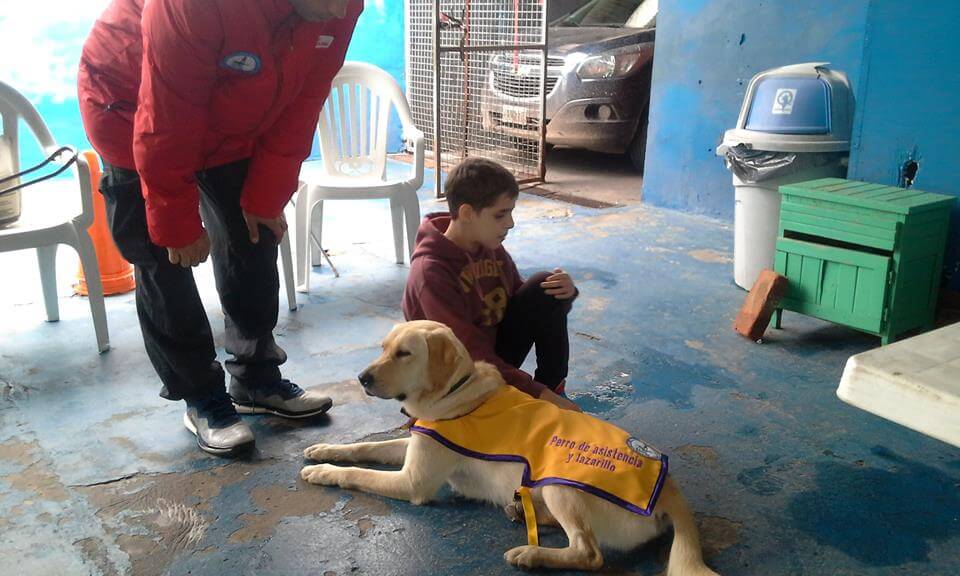The Heartwarming Story of Felipe and Nala


Written and verified by the lawyer Francisco María García
Felipe and Nala are inseparable. Golden Retriever Nala is an incredible guide dog, and 11-year-old Felipe’s faithful companion.
When people ask Felipe what he wants to be when he grows up, he always says, “I’m going to open my own garage. I’m going to wake up early every morning when everyone else is still asleep, and say to Nala, ‘Come on, girl. Let’s get to work’.”
Felipe was born completely blind. At 6 years old, he was diagnosed with Pervasive Developmental Disorders (PDD), which affect his ability to socialize and communicate.
Nala, Felipe’s new companion, was specially trained at the Guide Dog School of Argentina, an institution which has helped many people like Felipe over the years.
Felipe and Nala: the perfect team
Felipe never sits still. He loves technology and is inquisitive about everything. His daily routine revolves around attending a school for children with learning difficulties, where he takes part in a whole range of activities. He also attends a school for the blind, swims for a local club, and even plans to take up tennis.
When Felipe first considered getting a guide dog, he didn’t really understand how Nala would be able to help him. When he found out everything his new friend could do, he quickly fell in love with his new way of life.
Felipe and Nala: budding friendship

The friendship that has grown between Felipe and Nala has not been without its challenges. At first, Felipe didn’t know how to give commands. When it comes to interacting with a guide dog, getting the right tone of voice is essential.
But with a little training of his own, the boy learned to alter his voice to communicate with his new friend.
Felipe had this to say on the subject of communicating with Nala: “I don’t need to get angry at her, but sometimes I have to act like I am. When I tell her off, I pretend I’m angry. But I don’t ever have to scold her really.”
The relationship between Felipe and Nala is so strong that even when she’s not “working”, she stays at his side, and follows him everywhere he goes.
Mental and physical benefits
Nala’s arrival had a hugely positive impact on Felipe’s life. Taking care of his new friend and helper came with a whole host of new responsibilities.
Nala has also helped Felipe emotionally. She keeps him calm. and when he strokes her, it relaxes him and helps him feel safe.
Who can have a guide dog?
As the name suggests, guide dogs are trained to guide people who are blind, or visually impaired. They can also help them complete daily chores and tasks.
Guide dogs, or seeing-eye dogs, might be the best-known type of assistance dog, but they’re not the only one. However, they are the only type that is legally recognized. This recognition gives them certain rights and privileges that other dogs don’t have. For example, they can go into stores and on public transport.
While these dogs might be great at helping you avoid obstacles, there are some things they can’t do. For example, they can’t distinguish between red and green, which makes reading traffic lights difficult.
To understand traffic lights and decide when it’s safe to cross the road, they have to look at which light is illuminated. This requires great intelligence, and a high level of training.
Intensive guide dog training
Training a guide dog can take up to two years. It starts from birth, and continues right up until the moment they meet their new owner.
Experts say that not all guide dogs are suitable for all owners or situations. For example, a dog that lives in a small village might not be cut out for city life, where there is more traffic, people, noise…
These dogs usually work up until they’re about 12 years old. At this point, they go to the vet for a checkup, to see if they’re still able to work, or ready for retirement.
This text is provided for informational purposes only and does not replace consultation with a professional. If in doubt, consult your specialist.